Results 8,851 to 8,860 of 12096
Thread: Anandtech News
-
11-19-18, 12:02 PM #8851
Anandtech: Networking Priority: Aquantia Introduces Action Center and Black Friday De
For a number of years, there has only really been one player in the home networking priority space with software aimed at gamers. Today, that changes: since the launch of Aquantia’s multi-gigabit Ethernet cards that allow 2.5G, 5G and 10GBase-T connectivity over standard RJ-45 connections, the company has put work into its own networking priority software. The point of the software is to enable quality by prioritizing the network traffic, such that users who are simultaneously doing many things can ensure that software that requires low-latency (such as audio, or gaming) takes center stage. Aquantia’s software is called Action Center, launching in conjunction with a Black Friday deal.
More...
-
11-19-18, 02:52 PM #8852
Anandtech: Scaling Inference with NVIDIA’s T4: A Supermicro Solution with 320 PCIe La
When visiting the Supercomputing conference this year, there were plenty of big GPU systems on display for machine learning. A large number were geared towards the heavy duty cards for training, but also a number of inference-only systems cropped up. In heeding the NVIDIA CEO’s mantra of ‘the more you buy, the more you save’, Supermicro showed me one of their scalable inference systems based around the newly released NVIDIA Tesla T4 inference GPU.
More...
-
11-19-18, 02:52 PM #8853
Anandtech: Supermicro To Offer Reduced Memory Xeon Scalable
With big chips come big responsibility. One of the key elements of a big chip is its capability and connectivity, and there is always a big expectation that all of those features have to be used in every deployment. Whenever we talk about the LGA2066 consumer products built on mini-ITX reduced size platforms with only one PCIe slot, comments always pour in about why a user should buy a system that doesn’t use all the features. Well, take a look at the server space, where processors used for Compute typically ignore the PCIe side of the equation completely. Now Supermicro has gone one further and applied it to the server space.
This new implementation from Supermicro offers customers a Xeon Scalable blade server, the 6029TR-HTR, designed for a dual socket deployment, with only four memory channels per processor rather than the six that are supported.
The reason for a design like this, as Supermicro explained to me, was two-fold. Firstly, there are deployments that exist that are not memory bandwidth sensitive, or even memory capacity sensitive – these installations are only after the raw compute power of the chip. Secondly, having a reduced memory design assists with the deployment density. As shown in the images, if all six memory channels were needed, then there would be additional space between the processors due to the memory slots. Customers have been asking for this, and so a product was made.
In the consumer space, the first generation LGA2066 mini-ITX boards from ASRock did this, by only have two memory slots for dual channel memory despite that the processor could support four. There was, unfortunately, substantial vitriol about how this was limiting the system. At least in the server space at least, ultimately these products exist usually because someone has requested them.
Related Reading- TACC Frontera: Targeting 210W Next-Gen Xeons and Extreme Performance
- 896 Xeon Cores in One PC: Microsoft’s New x86 DataCenter Class Machines Running Windows
- Intel Investing $1B to Meet 14nm Demand: Prioritizing High-End Core and Xeon
Gallery: Supermicro To Offer Reduced Memory Xeon Scalable

More...
-
11-19-18, 04:29 PM #8854
Anandtech: Managing 16 Rome CPUs in 1U: Cray’s Shasta Direct Liquid Cooling
The Supercomputing show was a hive of activity, with lots of whispers surrounding the next generation of x86 CPUs, such as AMD’s Rome platform and Intel’s Cascade Lake platform. One of the big announcements at the start of the show is that Cray has developed an AMD Rome based version of its Shasta supercomputer deployments.
Cray had a sizeable presence at the show, given its position as one of the most prominent supercomputer designers in the industry. At its booth, we saw one of the compute blades for the Shasta design.
More...
-
11-20-18, 11:09 AM #8855
Anandtech: Huawei Server Efforts: Hi1620 and Arm’s Big Server Core, Ares
For at least four years now, Arm has been pushing its efforts to be a big part of the modern day server, the modern day data center, and in the cloud as a true enterprise player. Arm cores are found in plenty of places in the server world, with big deployments for its smartphone focused Cortex core family in big chips. However, over that same time period, we have been requesting a high-performance core, to compete in single threaded workloads with x86. That core is Ares, which we assume is due out in 2019, and while Arm hasn’t officially lifted the lid on the details yet, Huawei has already announced it has hardware with Ares cores at its center.
More...
-
11-20-18, 12:17 PM #8856
Anandtech: Arm Delivers on Cortex A76 Promises: What it Means for 2019 Devices
In the grand scheme of things, it hasn’t been all that long since we first covered Arm’s announcement of the new Cortex A76 CPU microarchitecture. The new CPU IP was publicly unveiled back on the first of June, and Arm had made big promises in regards to the performance and efficiency improvements of the new core. It’s been a little over 5 months since then, and as we originally predicted, we’ve seen vendors announce as well as ship silicon SoCs with the new CPU.
Last week we published our review of the Huawei Mate 20 and Mate 20 Pro – both which contain HiSilicon’s new Kirin 980 chipset. Unfortunately for a lot of our readers which are based in the US, the review won’t be as interesting as the devices won’t be available to them. For this reason I’m writing up a standalone piece focusing more on the results of the new Cortex A76 inside the Kirin 980, and discuss more in detail how I think things will play out in the upcoming generation of competing SoCs.
More...
-
11-20-18, 01:32 PM #8857
Anandtech: FreeTail EVOKE Pro microSDXC UHS-II Memory Card Capsule Review
Almost all content capture devices employ memory cards (flash-based removable media) for storage. Hand-held consoles and many other computing systems (PCs as well as smartphones) also employ them for augmenting the available storage capacity. There are different varieties of memory cards catering to various performance levels. CompactFlash (CF) became popular in the late 90s, but, has now been overtaken by Secure Digital (SD) and its smaller form-factor version (microSD). We recently started in-depth evaluation of the performance of various memory cards. FreeTail sent over their UHS-II microSDXC card for inclusion in our performance database. Read on for our review of the card.
More...
-
11-20-18, 04:26 PM #8858
Anandtech: NVIDIA Unveils DGX-2H Server with 450W Tesla V100 GPUs
NVIDIA has introduced a new version of its DGX-2 server that is outfitted with higher-performing CPUs and GPUs. The DGX-2H server is powered by 16 Tesla V100 GPUs that run at higher clocks and feature a 450 W TDP each. The whole system consumes up to 12 kW of power and delivers 2.1 PetaFLOPS of compute horsepower.
NVIDIA’s DGX-2H is an updated version of the DGX-2 machine the company introduced earlier this year. The new system is based on Intel’s two 24-core Intel Xeon Platinum 8174 processor accompanied by 1.5 TB of DDR4 memory, as well as 30 TB of NVMe storage. The key improvements of the new server versus the previous one are faster NVIDIA Tesla V100 GPUs featuring 512 GB of HBM2 memory in total. In addition, the new DGX-2H also has faster networking capabilities: it has dual 10/25/40/50/100 GbE instead of 10/25 GbE.
Thanks to faster graphics processors with a 450 W TDP each, the system now can deliver 2.1 PFLOPS of compute performance, up from 2 PFLOPS before. Meanwhile, in a bid to increase power, it looks like NVIDIA had to switch to a new cooling method. ServeTheHome believes that NVIDIA also uses a new cooling subsystem as the DGX-2H weighs 20 pounds more than its predecessor (360 pounds vs. 340 pounds), though the company has not confirmed this. Along with performance improvements NVIDIA had to decrease maximum operating temperature of the DGX-2H from 35C to 25C.NVIDIA DGX Series (with Volta) DGX-2H DGX-2 DGX-1 CPUs 2 x Intel Xeon
Platinum 81742 x Intel Xeon
Platinum 81682 x Intel Xeon
E5-2600 v4GPUs 16 x NVIDIA Tesla V100
32GB HBM2 (450 W)16 x NVIDIA Tesla V100
32GB HBM2 (350 W)8 x NVIDIA Tesla V100
16 GB HBM2System Memory Up to 1.5 TB DDR4 Up to 0.5 TB DDR4 GPU Memory 512 GB HBM2
(16 x 32 GB)256 GB HBM
(8 x 32 GB)Storage 30 TB NVMe
Up to 60 TB4 x 1.92 TB NVMe Networking 8 x Infiniband/100 GbE
or
Dual 100 GbE8 x Infiniband/100 GbE or
Dual 10/25 Gb4 x IB +
2 x 10 GbEPower 12 kW 10 kW 3.5 kW Size 360 lbs 340 lbs 134 lbs GPU Throughput Tensor: 2100 TFLOPs
FP16: ? TFLOPs
FP32: ? TFLOPs
FP64: ? TFLOPsTensor: 1920 TFLOPs
FP16: 480 TFLOPs
FP32: 240 TFLOPs
FP64: 120 TFLOPsTensor: 960 TFLOPs
FP16: 240 TFLOPs
FP32: 120 TFLOPs
FP64: 60 TFLOPsCost ? $399,000 $149,000
NVIDIA has not disclosed pricing of the DGX-2H, though it is likely that it will cost more than $399,000, the price of the DGX-2. What remains to be seen is whether NVIDIA customers find the DGX-2H performance good enough for extra 2 kW of power consumption.
Related Reading:
- NVIDIA’s DGX-2: Sixteen Tesla V100s, 30 TB of NVMe, only $400K
- NVIDIA Unveils & Gives Away New Limited Edition 32GB Titan V "CEO Edition"
- GIGABYTE Launches Two 4U NVIDIA Tesla GPU Servers: High Density for Deep Learning
Sources: NVIDIA, ServeTheHome
More...
-
11-20-18, 05:09 PM #8859
Anandtech: Valve Discontinues Steam Link Streaming Box
First launched mid-decade, Valve’s Steam Link was one of several local game streaming products to hit the market, allowing users to play PC games away from their PC by streaming its contents to another room. And while the device definitely made an impression upon its launch, the writing has been on the wall for some time now that Valve hasn’t been completely satisfied with the hardware. Now the company is announcing that they have wrapped up production of the Steam Link, with the streaming box already out of stock in Europe and most of North America.
Initially released back in November of 2015, the Steam Link was part of a multi-pronged Valve effort dubbed “Steam Universe” that focused on getting Steam and its games on to living room TV screens. This initiative included the SteamOS Linux distribution, Steam Machines running SteamOS, and then the Steam Link. The Steam Link in turn was a relatively simple and low-cost set-top box that served as a remote streaming endpoint; gamers could use it to see what Steam was seeing on their PC, and then remotely play their games. Valve kept the box simple – it was little more than an H.264 decoder with network connectivity and a Bluetooth adapter – allowing it to be small and cheap.
Of the three prongs of the Steam Universe initiative, the Steam Link was in turn easily the most successful. While Steam Machines fizzled almost immediately – and SteamOS remains a neat side-project – the Steam Link was sold in volume by both Valve and retail partners. Though not the first PC streaming solution, it was by far the most prevalent. And, if you could get past the inheriant lag and occasional game compatibility issues, it worked pretty well.
However it’s also been clear that while the Steam Link made an impact, Valve has wanted out. The company has offered frequent sales on the hardware in the past year, often selling it for only a few bucks plus shipping (including right now). So the company has been trying to draw down their Steam Link inventory for some time, and with their latest announcement it looks like they’ve finally completed the task.
And while Valve’s very brief announcement doesn’t officially state why they’re getting out of the STB business, the more recent development of the Steam Link App paints a very clear picture. The STB was little more than an H.264 decoder to begin with, and the massive prevalence of smartphones means that pretty much everyone carries one of those in their pocket, never mind the rapid rise of smart TVs. Even with the Steam Link box, the strength of Valve’s play was in the software and integration, so like so many other discrete devices over the past decade, the streaming STB’s functionality has been subsumed by other smart devices.
Finally, for their part, Valve is reiterating that they will still continue supporting all forms of Steam Link, app and STB. So while hardware production has wrapped up, Valve seems prepared to offer what little support is necessary for their most successful hardware product to date.
Source: Valve (via The Verge)
More...
-
11-20-18, 05:09 PM #8860
Anandtech: Your Highness: G.Skill Trident Z Royal, Bling Factor 11
G.Skill this week has officially introduced its Trident Z Royal family of memory modules. This memory featuring crystalline light bars with RGB lighting and polished heat spreaders. The modules will be available at various speed bins with a maximum data transfer rate of up to DDR4-4600.
G.Skill’s Trident Z Royal memory modules will feature 8 GB and 16 GB capacities and will be available in dual-channel and quad-channel kits. The product family will include DDR4-3000, DDR4-3200, DDR4-3600, DDR4-4000, DDR4-4266, DDR4-4400, and DDR4-4600 speed bins at 1.35 V, 1.4 V, 1,45 V and 1.5 V. Being aimed at enthusiasts and overclockers, G.Skill’s Trident Z Royal will rely on the company’s PCBs designed in house.
The key feature of the Trident Z Royal memory modules is crystalline RGB lightbar with multiple lighting zones as well as polished silver or gold heat spreaders. Since the lightbar is unique, G.Skill will provide a special software to control it. The program will be available for download from G.Skill’s website once the modules hit the market.G.Skill's Trident Z Royal Memory Kits Speed CL Timing Voltage Kit
Config.DDR4-3000 CL16 18-18-38 1.35 V 8 GB×2
8 GB×4
16 GB×2
16 GB×4DDR4-3200 CL14 19-19-39 8 GB×2
8 GB×4
8 GB×8
16 GB×2
16 GB×4
16 GB×8CL16 18-18-38 8 GB×2
8 GB×4
8 GB×8
16 GB×2
16 GB×4
16 GB×8DDR4-3600 CL16 18-18-36 8 GB×2
8 GB×4CL19 20-20-40 8 GB×2
8 GB×4DDR4-4000 CL17 17-17-37 8 GB×2
8 GB×4CL19 19-19-39 16 GB×2 DDR4-4266 CL19 19-19-39 1.40 V 8 GB×2 DDR4-4400 CL18 19-19-39 8 GB×2 CL18 22-22-42 1.50 V 8 GB×4 DDR4-4600 CL18 22-22-42 1.45 V 8 GB×2
G.Skill plans to start selling its Trident Z Royal memory modules in December, but as usual the company does not pre-announce pricing. One thing for sure is that the Trident Z Royal memory modules will carry a premium price tag because of the unique design.
Related Reading- G.Skill Trident Royal Crystalline DRAM: Premium Gemstone Glamour
- G.Skill Unveils 64 GB DDR4-4266 and 128 GB DDR4-4000 Kits for HEDTs
- G.Skill Announces DDR4-4800 and DDR4-4500 Kits for Z390 Boards
- G.Skill’s DRAM Extremes: DDR4-4000 on AMD Ryzen, DDR4-5066 on Intel Core i7
Source: G.Skill
More...
Thread Information
Users Browsing this Thread
There are currently 19 users browsing this thread. (0 members and 19 guests)




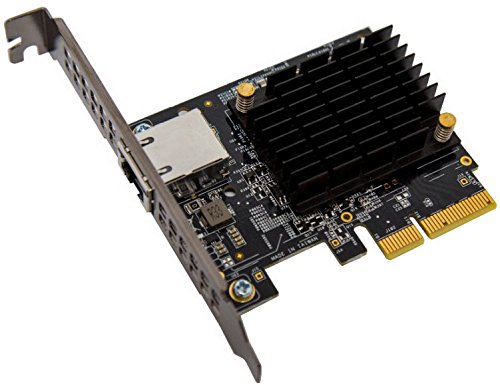

 Quote
Quote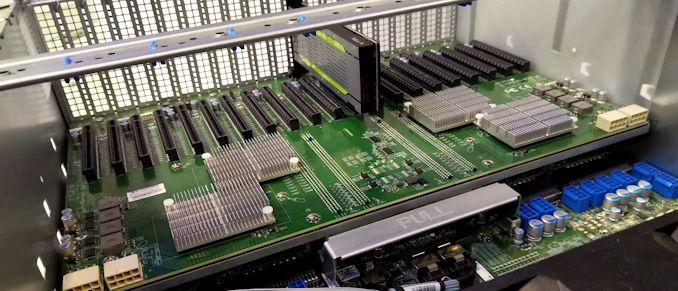
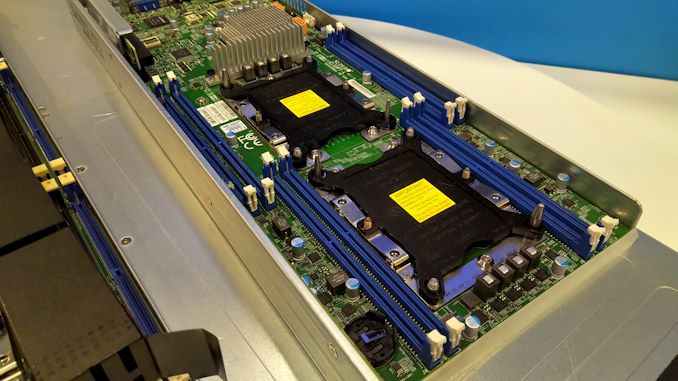
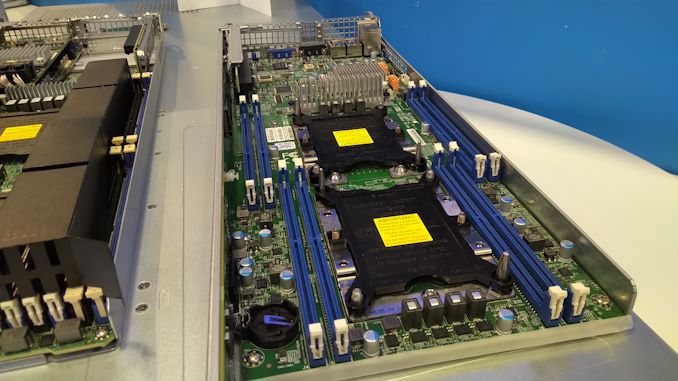


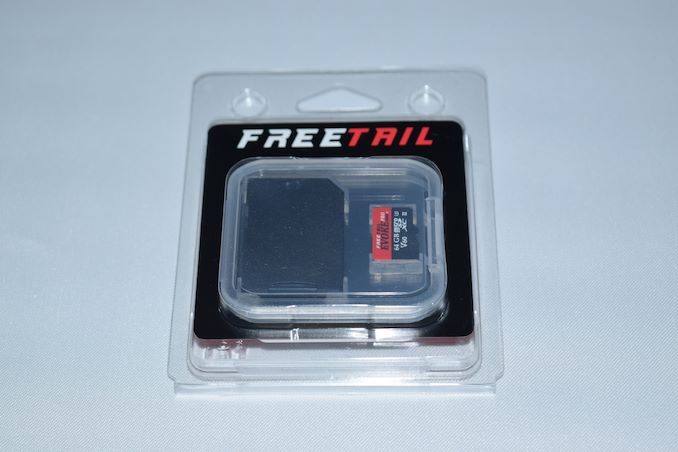
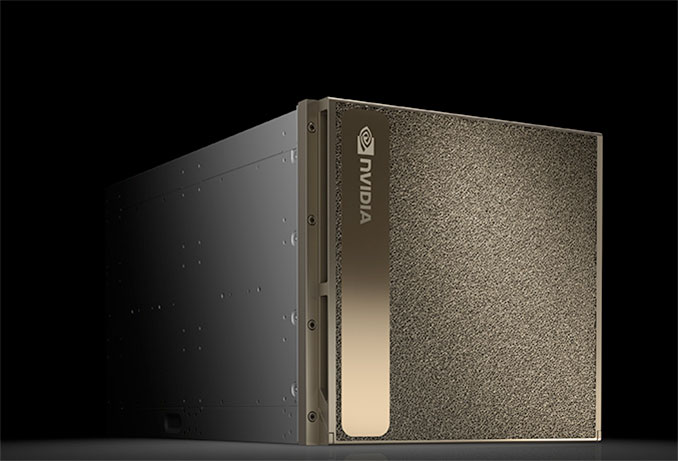
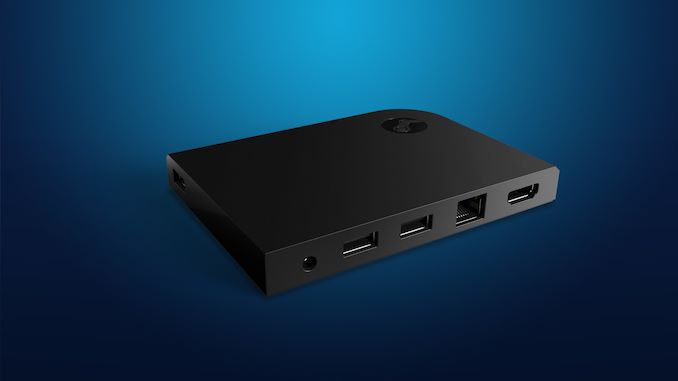
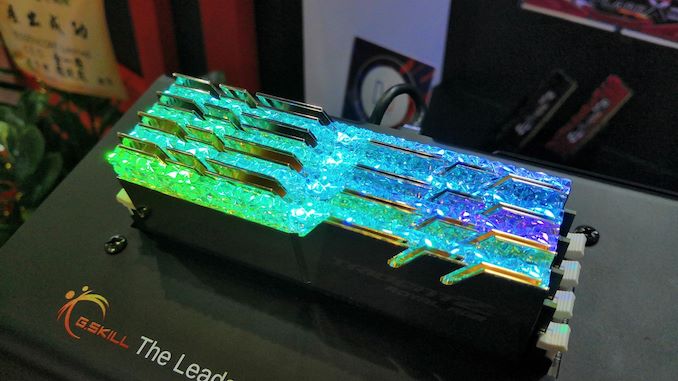
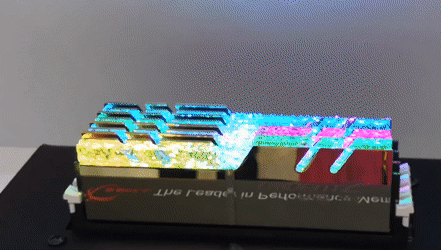
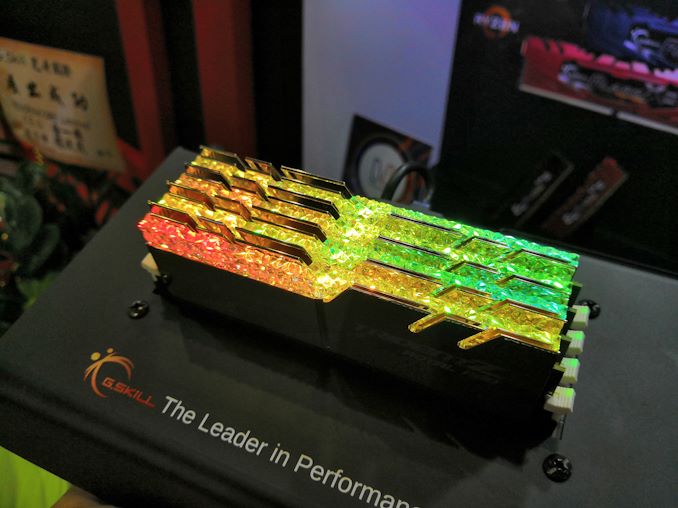

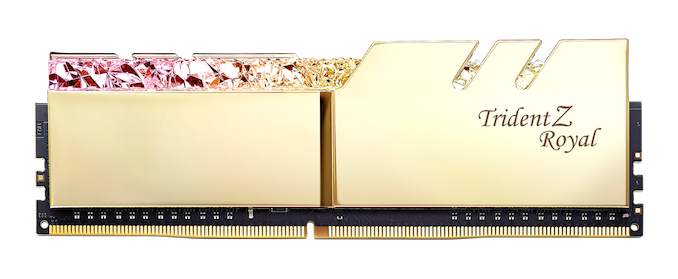
















Bookmarks